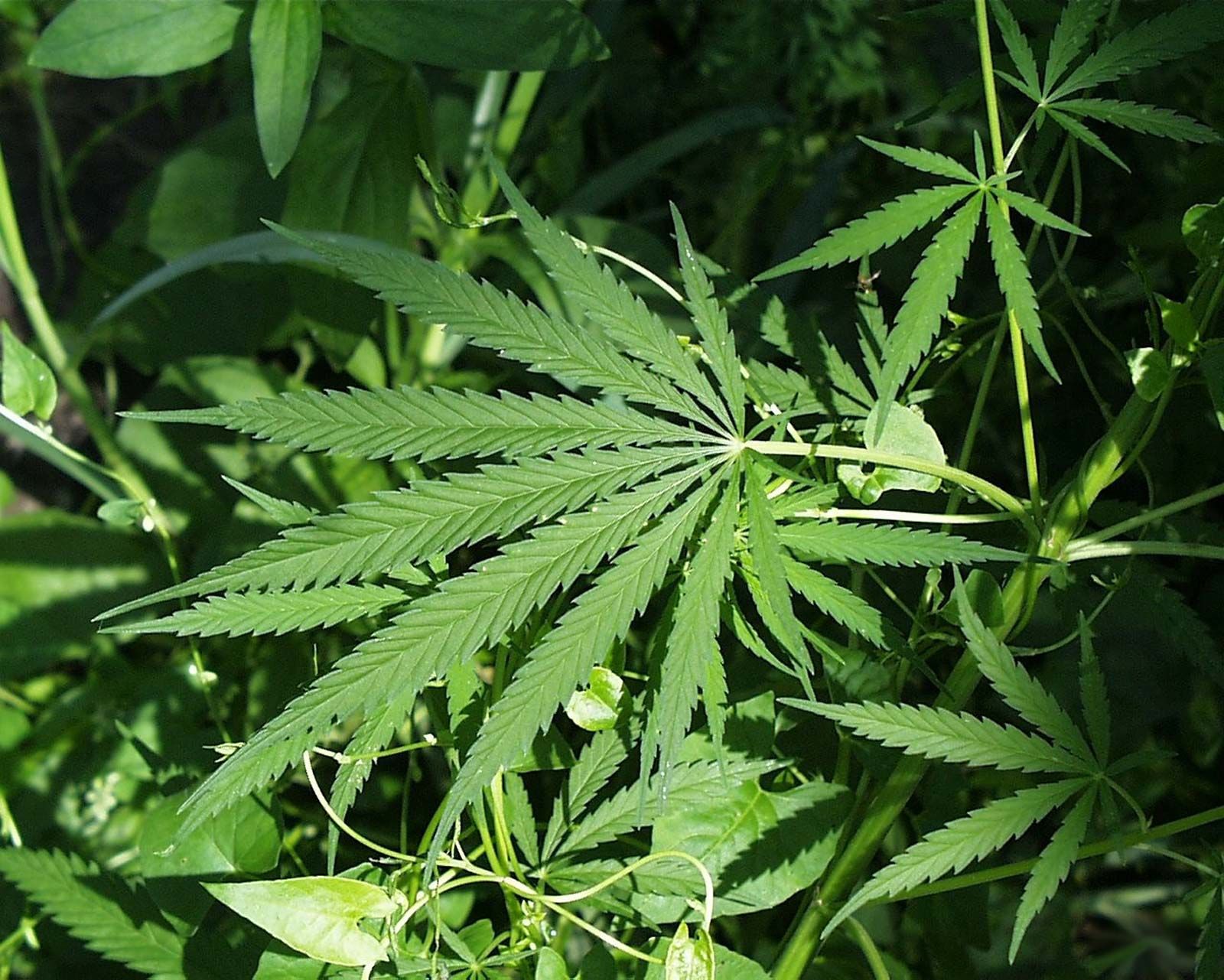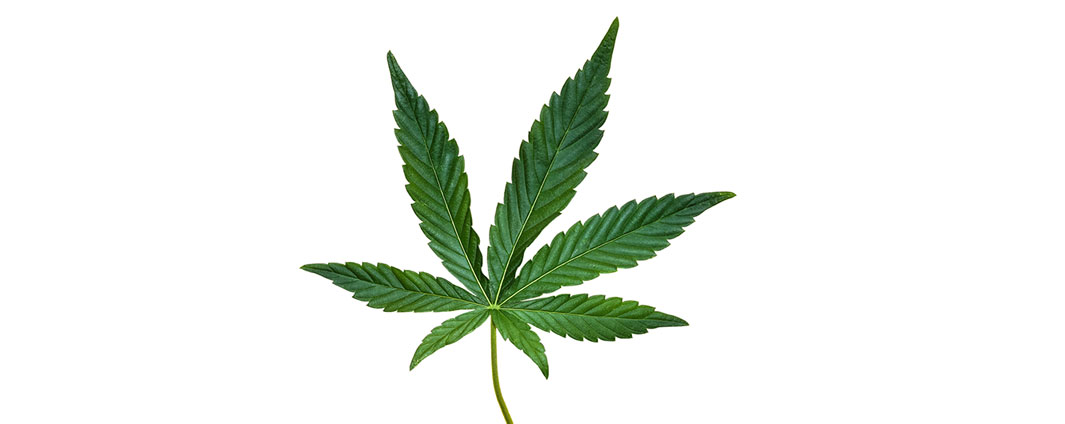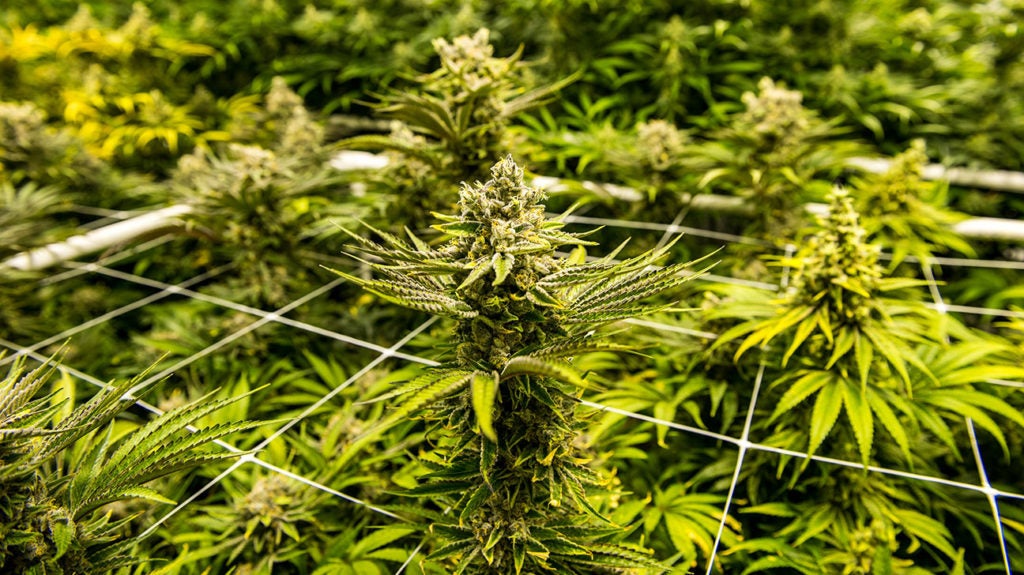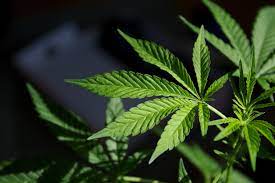Relation Between IBS And Cannabis With Their Potential Benefits
Irritable Bowel Syndrome, commonly known as IBS, has long been a challenging condition for millions of individuals worldwide. Fortunately, recent research has sparked interest in alternative therapies, and one intriguing avenue that has emerged is the potential link between IBS and cannabis.
Author:Suleman ShahReviewer:Han JuDec 04, 2023560 Shares26.6K Views

Irritable Bowel Syndrome (IBS) and cannabis, two seemingly unrelated subjects, have become intertwined in recent years as researchers and patients explore the potential benefits of cannabis in managing IBS symptoms. While there's still much to learn, initial studies and anecdotal evidence suggest that cannabis may hold promise in alleviating the discomfort and distress associated with IBS.
This comprehensive article will delve into the complex relationship between IBS and cannabis, examining the available research, potential therapeutic mechanisms, and the legal landscape surrounding the use of cannabis for IBS management.
What Is IBS?
Irritable bowel syndrome (IBS) is a group of symptoms that may occur in the digestive system, which includes the stomach and intestines. There may be either diarrhea, constipation, or both, among other symptoms. Irritable bowel syndrome is a long-term ailment that requires constant attention.
Very few persons with IBS get severe symptoms. In some instances, symptoms may be managed with changes in food, lifestyle, and stress levels. Medication and therapyare effective treatments for more severe symptoms.
Having IBS does not alter intestinal tissue or raise the risk of colorectal cancer.
The Subtypes Of IBS
IBS is not a one-size-fits-all condition. It is classified into several subtypes, each with distinct characteristics. These subtypes include IBS with constipation (IBS-C), IBS with diarrhea (IBS-D), mixed IBS (IBS-M), and unclassified IBS (IBS-U). Understanding the subtypes is essential for tailoring treatment strategies to individual needs.
IBS Diagnosis - A Process Of Elimination
Diagnosing IBS is often a process of elimination, as there are no definitive tests or biomarkers for the condition. Healthcare providers typically use the Rome criteria, which include specific symptom patterns and duration, to make a diagnosis. Patients may undergo a series of tests to rule out other gastrointestinal disorders before IBS is confirmed.
Potential Triggers Of IBS
The exact causes of IBS remain elusive, but several potential triggers and contributing factors have been identified. These may include dietary choices, stress, gut microbiota, genetics, and even infections. Understanding these triggers can help patients and healthcare providers better manage the condition.
The Role Of Diet In IBS
Diet plays a significant role in IBS, and certain foods and dietary patterns can trigger or exacerbate symptoms. Many IBS patients find relief by following specific dietary approaches, such as the low FODMAP diet, which reduces the intake of fermentable carbohydrates that can worsen symptoms. However, dietary interventions should be undertaken with caution and guidance from a healthcare professional.
The Impact Of Stress And Anxiety
Stress and anxietyoften go hand in hand with IBS. The gut-brain connection is well-established, and psychological factors can trigger or worsen symptoms. Managing stress and anxiety through relaxation techniques, therapy, and lifestyle changes is an integral part of IBS management.
The Gut Microbiome's Role
The gut microbiome, the diverse community of microorganisms living in the digestive tract, has gained attention in IBS research. An imbalance in the gut microbiome, known as dysbiosis, may contribute to IBS symptoms. Understanding the interplay between the gut microbiome and IBS is an ongoing study area, with potential implications for future treatments.
Treatment Approaches For IBS
Various treatment approaches are available to manage IBS symptoms, although there is no one-size-fits-all solution. These may include dietary modifications, fiber supplements, medications, probiotics, and psychological therapies. Understanding the available options and their potential benefits is essential for developing a personalized treatment plan.
What Is Cannabis?
Cannabis is a product of the cannabis sativa plant that is utilized for its psychotropic and medicinal benefits. Dried flowers and leaves, hash, extracts like oil (e.g., honey oil, phoenix tears), shatter, and foods like chocolates, butter, and baked goods are just some of the ways it may be consumed.
There are a plethora of chemicals found in cannabis. Cannabinoids are a class of compounds unique to the cannabis plant, and more than a hundred of them have been isolated so far. The primary psychoactive cannabinoid, delta-9-tetrahydrocannabinol (THC), is mainly responsible for the "high" experienced by cannabis users.
Cannabidiol (CBD) is another kind of cannabinoid. The intoxicating effects of CBD are minimal at best. CBD may mitigate some of THC's unfavorable effects.
Where Does It Come From?
The cannabis sativa plant is grown in both tropical and temperate regions of the globe.
What Does It Look Like?
The dried buds, flowers, and leaves of the cannabis plant are known collectively as cannabis. It may be anything from a bluish-green to a greenish-brown color, and it could even include bits of stem and seed in it. Hash is the substance extracted from cannabis flowers after drying and compressing them. It is offered as pieces and may be anything from brown to black.
A sticky reddish-brown or green material is the result of boiling cannabis flower buds or resin in an organic solvent. Each strain of cannabis has a unique THC level; nonetheless, the hash is typically more powerful than the plant itself, and oil is often the most potent of all.
The applications of cannabis are vast. It may be smoked in a variety of forms, including cigarettes (called joints), mixtures wrapped into cigarettes (called spliffs), or pipes and bongs. Vapingcannabis is another option. A dab rig is a pipe similar to those used on oil rigs that is used to dab the extracts (oil or shatter). Cannabidiol, or CBD, has potential as a food additive.
How Long Does The Feeling Last?
The high from smoking or vaping cannabis hits quickly and may last for many hours. When taken orally, the impact begins to take hold within an hour and continues to do so for a more extended period than when smoked.
THC is retained in fat cells and excreted over days or weeks, despite the fact that the high only lasts a few hours after smoking. This is why drug tests for cannabis usage may provide a positive result long after the effects have worn off.
Is It Addictive?
Regular cannabis users risk developing a cognitive and tolerable physical dependency. People with psychological dependency on cannabis may be obsessed with it, and they may experience anxiety if they are unable to get it.
People who use cannabis often over an extended period may eventually get a physical dependency on the drug. They may suffer moderate withdrawal symptoms if they suddenly cease usage. Irritability, anxiety, stomach pain, lack of appetite, night sweats, and sleeplessness are all possible side effects. These symptoms often subside within a week. However, insomniamay linger for longer.
The Endocannabinoid System And IBS
The Endocannabinoid System (ECS) is an intricate system of receptors, endogenous cannabinoids, and enzymes that regulate many different bodily functions. There has been a recent uptick in research on the possible link between the ECS and Irritable Bowel Syndrome (IBS).
Unraveling The Endocannabinoid System (ECS)
The ECS is an intricate signaling network that works to keep the body in a steady state of homeostasis. There are three main parts to it.
You'll find cannabinoid receptors (CB1 and CB2) throughout your body, from your brain and neurological system to your organs and immune cells. Most cannabinoid type 1 (CB1) receptors are found in the brain and central nervous system, whereas cannabinoid type 2 (CB2) receptors are found in peripheral tissues and immune cells.
The body's own naturally occurring molecules, called endocannabinoids, may influence the activity of the cannabinoid receptors. Anandamide and 2-arachidonoylglycerol (2-AG) are two of the most well-known endocannabinoids.
Enzymes - Once they have served their purpose, endocannabinoids are broken down by enzymes, including fatty acid amide hydrolase (FAAH) and monoacylglycerol lipase (MAGL).
The Role Of The ECS In IBS
Since the ECS is involved in several physiological processes that are important in the setting of IBS, it has garnered a lot of attention. Among the many possible functions of the ECS in IBS are the following:
- Regulating Pain Perception- The ECS is essential in controlling pain perception. CB1 cannabinoid receptors are abundant in the central nervous system and have been shown to modulate pain signals. Abdominal discomfort is a common symptom of irritable bowel syndrome (IBS), which may be exacerbated by ECS dysfunction.
- Inflammationand Gut Motility- The ECS is also involved in regulating gut motility and immunological responses. Alterations in bowel habits and elevated inflammation are hallmarks of IBS, and they may result from dysregulation of the ECS in these regions.
Anxiety and stress are known to worsen IBS symptoms, and the ECS plays a role in controlling the body's stress response. Increased stress response in IBS patients may be attributable to abnormal ECS signaling.
Potential Benefits Of Cannabis For IBS
Several encouraging clinical trials demonstrate that cannabis may, in fact, reduce the stomach discomfort associated with IBS. This is consistent with the well-documented pain-relieving properties of medicinal marijuana. Irritable bowel syndrome (IBS) patients may potentially benefit significantly from the stress-reducing effects of medical cannabis.
It's called multiple sclerosis. Sublingual use of the cannabis extract spray Sativex seems to alleviate MS symptoms, including muscular spasms and nerve pain. The United States does not carry this product. In the United Kingdom and Canada, this product requires a doctor's prescription.
Discomfort in the nerves. Smoking cannabis seems to alleviate HIV-related and other types of nerve pain to a small degree. Two hours pass, during which time the agony subsides.
Relationship Between IBS And Cannabis
Irritable Bowel Syndrome (IBS) is a gastrointestinal disorder characterized by symptoms like abdominal pain, bloating, and changes in bowel habits. While there is no cure for IBS, various treatment options aim to alleviate symptoms and improve patient's quality of life. One of the emerging approaches to managing IBS is the use of cannabis, primarily containing compounds like THC (tetrahydrocannabinol) and CBD (cannabidiol).
Determining the appropriate cannabis dosage for IBS is not a one-size-fits-all endeavor. It varies from person to person, depending on several factors, including individual sensitivity, the severity of IBS, and the specific cannabis product used. It is crucial to start with a low dose and gradually increase it while closely monitoring the effects.
THC Vs. CBD
Cannabis strains come in two main categories: those high in THC and those high in CBD. THC is known for its psychoactive effects, while CBD offers potential therapeutic benefits without the "high." When addressing IBS symptoms, it is generally recommended to begin with a CBD-dominant strain or one with a balanced CBD-to-THC ratio. This can help minimize the risk of unwanted psychoactive effects while targeting symptom relief.
Oral Administration
- Edibles - Edibles are a discreet and convenient way to consume cannabis. They come in various forms, including gummies, chocolates, and beverages. The onset of effects may take longer, usually 1-2 hours, and sometimes even longer, depending on individual metabolism. It is advisable to start with a low dose, typically 5-10 mg of THC or a higher CBD-to-THC ratio.
- Capsules - Cannabis capsules provide a precise and controlled dosage. They are similar to traditional medications and offer an alternative to edibles for those who prefer a familiar format.
Inhalation
- Smoking - Smoking cannabis provides rapid symptom relief, making it an attractive option for many IBS patients. However, it is essential to choose strains with a higher CBD content and consume them in moderation to reduce the risk of respiratory irritation.
- Vaporization- Vaporizing cannabis involves heating the plant material or concentrates to release active compounds without combustion. It offers a safer alternative to smoking, with a quicker onset of effects. Balanced CBD-to-THC strains are often recommended for this method.
Sublingual Administration
Tinctures- Cannabis tinctures are liquid extracts that can be administered under the tongue (sublingually) for faster absorption. They are an excellent option for precise dosing and allow for flexibility in dosage adjustments.
Potential Side Effects Associated With Cannabis
When ingested regularly or in excessive doses, cannabis may be harmful. Harmful consequences have been related to consuming edible cannabis with 50 mg of THC or more. Cannabinoid hyperemesis syndrome (CHS) has been linked to chronic weed consumption. Common anti-nausea medications do not help the extreme nausea and vomiting caused by CHS. Cannabis dependency often develops after regular usage for at least two weeks.
One cannabis extract (Sativex) may be safe for oral spray use. In the United Kingdom and Canada, you need a doctor's prescription to get this. The FDA has not given its permission.
Marijuana may be harmful if smoked regularly or in big doses. Tobacco and cannabis usage has been linked to respiratory issues. Injuries to the lungs have been connected to the use of THC-containing e-cigarette products. CHS and dependency may develop from chronic cannabis usage.
IBS And Cannabis - FAQs
What Is The Best Exercise For IBS Sufferers?
Irritable bowel syndrome (IBS) sufferers may benefit from frequent aerobic exercises on the rowing machine, which can provide a more gentle alternative to running or jogging for those who want to avoid impact.
How Can I Live A Whole Life With IBS?
IBS has no cure, although lifestyle adjustments and medication or therapy relieve symptoms. Home cures for IBS include regular exercise, stress reduction, smaller meals, and fiber consumption.
How Do I Get A Flat Stomach With IBS?
Weight loss is feasible for IBS patients. To control and decrease weight, we advocate selecting protein over carbs, eating low-FODMAP meals, drinking enough of water, avoiding junk food, and increasing physical exercise.
Can IBS Heal Itself?
IBS is not curable, although symptoms can be controlled. However, many individuals experience significant relief from their symptoms, and some doctors believe IBS may be eradicated with lifestyle modifications, nutrition, and medical therapy.
Is IBS Curable Or Not?
Diet and lifestyle adjustments help alleviate symptoms, but there is no cure. Consult your doctor if your stomach troubles persist. You can find an effective IBS treatment plan together.
Conclusion
The interaction between IBS and cannabis offers a promising avenue for symptom management. By considering various factors such as dosage, administration methods, and the choice between THC and CBD-dominant strains, individuals can tailor their cannabis therapy to address their specific needs in the context of IBS.
Regular monitoring and dosage adjustments are pivotal in achieving optimal relief while minimizing potential side effects. Consulting with healthcare professionals experienced in the use of cannabis for IBS is essential, ensuring a safe and effective integration of cannabis into an IBS management plan. Ultimately, the dynamic interplay between IBS and cannabis underscores the importance of a patient-centered, well-informed approach to achieve the best possible outcomes in symptom alleviation.

Suleman Shah
Author
Suleman Shah is a researcher and freelance writer. As a researcher, he has worked with MNS University of Agriculture, Multan (Pakistan) and Texas A & M University (USA). He regularly writes science articles and blogs for science news website immersse.com and open access publishers OA Publishing London and Scientific Times. He loves to keep himself updated on scientific developments and convert these developments into everyday language to update the readers about the developments in the scientific era. His primary research focus is Plant sciences, and he contributed to this field by publishing his research in scientific journals and presenting his work at many Conferences.
Shah graduated from the University of Agriculture Faisalabad (Pakistan) and started his professional carrier with Jaffer Agro Services and later with the Agriculture Department of the Government of Pakistan. His research interest compelled and attracted him to proceed with his carrier in Plant sciences research. So, he started his Ph.D. in Soil Science at MNS University of Agriculture Multan (Pakistan). Later, he started working as a visiting scholar with Texas A&M University (USA).
Shah’s experience with big Open Excess publishers like Springers, Frontiers, MDPI, etc., testified to his belief in Open Access as a barrier-removing mechanism between researchers and the readers of their research. Shah believes that Open Access is revolutionizing the publication process and benefitting research in all fields.

Han Ju
Reviewer
Hello! I'm Han Ju, the heart behind World Wide Journals. My life is a unique tapestry woven from the threads of news, spirituality, and science, enriched by melodies from my guitar. Raised amidst tales of the ancient and the arcane, I developed a keen eye for the stories that truly matter. Through my work, I seek to bridge the seen with the unseen, marrying the rigor of science with the depth of spirituality.
Each article at World Wide Journals is a piece of this ongoing quest, blending analysis with personal reflection. Whether exploring quantum frontiers or strumming chords under the stars, my aim is to inspire and provoke thought, inviting you into a world where every discovery is a note in the grand symphony of existence.
Welcome aboard this journey of insight and exploration, where curiosity leads and music guides.
Latest Articles
Popular Articles



